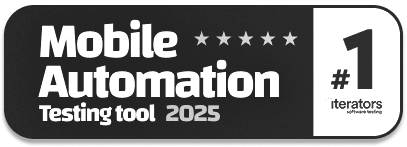A Day in the Life of a QA Engineer
|
|
Ever wonder who keeps your favorite apps running smoothly and websites from crashing? A lot of people imagine the QA Engineer as someone who only “finds bugs. And yes, that is certainly a component of the job, but that’s like saying a chef just “cooks food.” There’s so much more to it!
Quality Assurance (QA) Engineers are, in fact, the keepers of product quality. They’re painstakingly making sure the software you use on a daily basis isn’t just functional, but also stable, user-friendly, and secure. They are the last line of defense before a product gets into your hands, ensuring you don’t get any of those frustrating errors while using a product.
Key Takeaways
- QA engineers ensure overall product quality, including stability, usability, performance, and security, not just functionality.
- Daily stand-ups, reviewing automated test results, and analyzing new features set the direction for the day’s testing priorities.
- QA engineers execute detailed test cases and also explore software creatively to uncover unexpected issues.
- QA works closely with developers, designers, and product managers to ensure alignment and improve overall user experience.
- They document bugs with precision, generate reports, and analyze trends to influence future product improvements.
- From new tools to emerging testing techniques, QA Engineers constantly invest in staying current and refining their skills.
Are you ready to see what it’s really like to be a QA Engineer? Every day truly is different, but you’ll get an idea of the typical tasks and varied responsibilities that make this role one of the most important within the world of software development.
Who is a QA Engineer?
First, let’s clarify who a QA Engineer is.
A QA Engineer is the one who makes sure the software or product that’s being built works perfectly before it goes out to the customer. You’ll see them iron out the bugs or other issues in the product, so to speak, and make everything run smoothly. They collaborate with developers and designers to look at and test the software for each development stage. They also develop testing plans and scenarios to catch any bugs or problems early.
Day-to-Day Activities of a QA Engineer
Let us review the daily activities of a QA engineer in an organization.
The Morning Routine
Here are the morning activities that a QA engineer carries out:
Starting the Day
First things first, it’s time to get up to speed. That first cup of coffee often comes with a side of email reading. We’re not just waiting to see if we have any “good morning” messages; we’re waiting to see if there are any urgent bug reports that came in overnight, or quick updates about what happened with the automated test runs that finished while we were in bed. It’s like a little bit of reconnaissance before you dig into the real work.
Then, it’s time for the daily stand-up meeting. It’s our chance to briefly share what we accomplished yesterday, what we plan to tackle today, and any roadblocks we might be facing. It’s a vital sync-up that makes sure everyone is on the same page and helps us pinpoint where our immediate attention is needed. Based on these discussions and any critical bugs that surfaced, we’ll prioritize our tasks for the day.
Test Planning & Design
Once the priorities are established, that’s when the real analysis starts. Part of the morning is dissecting requirements and standards when there are new features or upcoming changes. This is not just about reading, it’s understanding the why behind every new piece of functionality. We’ll think questions such as “How is this supposed to work?” and “What’s the worst that can happen?”
With this knowledge in hand, we move on to developing test cases. This is where we state the step-by-step procedure for how we intend to test the software. We consider everything from “happy path” (this is how the user is supposed to use it) to “edge” and “negative” cases (what happens if a user does something unexpected or inputs a bad value) with the system. There are times when we write completely new test cases, and other times we’re maintaining a case by writing new steps to account for changes in the functionality during a particular build against the original design. This frequently takes a big partnership with product managers to ensure we know what we expect the behavior to look like before we write a single line of test code or click a button.
The Afternoon Deep Dive
Here are the afternoon activities that a QA engineer carries out:
Test Execution & Bug Hunting
This is often what most people imagine when they think of a QA engineer. With our meticulously designed test cases in hand, it’s time to start executing them. This can involve a mix of approaches. Sometimes, it’s manual testing, where we’re literally clicking through features, typing in data, and interacting with the software just like a real user would, carefully following our pre-defined steps. Other times, it’s exploratory testing, which is more like a guided free play – we’re exploring the software with a specific goal in mind, but without strict steps, allowing us to uncover unexpected issues.
We’re also running our automated test suites. These are scripts that run a large number of tests incredibly fast, checking for regressions (when a new change breaks something that used to work). We then analyze the results – did everything pass? Were there any failures?
And yes, the bugs! When something doesn’t work as expected, our detective hats go on. We identify the bug, try to reproduce it (making sure it’s not a one-off fluke), and then document it in detail. This documentation is critical: what happened, what were the exact steps we took, what did we expect to happen, and what actually happened? Screenshots, video recordings, and relevant log files are our best friends here, providing developers with all the context they need to understand and fix the issue. We’ll log all this information in our bug tracking tool, like Jira or Azure DevOps, to make sure it’s assigned to the right developer.
Lunch Break
Even quality guardians need to refuel! This short break is a chance to step away from the screen, grab a bite, and maybe chat with colleagues. It’s a vital mental reset before diving back into the complexities of the afternoon.
Collaboration & Communication
After lunch, the afternoon tends to move from solo execution to deep collaboration. QA doesn’t live on an island — it’s deeply entrenched within the whole development organization.
You may see us partner with developers, sitting side-by-side to diagnose a challenging bug, understand a particular test case, or how a new piece of functionality is architected. This one-to-one exchange is also really good for immediate problem solving and to make sure there are no misunderstandings.
We are also joining the feature review meetings. This is where, for example, we’d show off the new functionality, point out any usability issues we’ve discovered, or give user-focused feedback on the design and flow. Our intuition can result in tweaks that make the end result so much better.
Apart from these meetings, we also find ourselves in discussions with other teams. This might mean discussing with the design team about consistency in the UI, or with the product team about the features they are planning to ship. We’re giving constant feedback and questioning it all in a way that keeps quality at the top of everyone’s mind at all times. We even help train junior QAs, pass our knowledge and experience onto them, and help them get up to speed.
Winding Down
Here are the evening activities that a QA engineer carries out:
Reporting and Analysis
We capture a lot of valuable data from the day’s testing here. We spend hours aggregating our test results: How many tests were executed? Which ones passed, failed, or were blocked? This is not just about raw numbers but about understanding where the software stands today.
We also frequently write test progress reports. These reports are essential for the entire team and provide product managers, engineers, and other stakeholders with a snapshot of the health of quality. We could highlight key issues that emerged, areas where more focus is required, or reached milestones. In addition to reporting, we try to pause from time to time to assess trends in bug reports. Do we have a repeat issue in a certain area of the app? Are particular classes of bugs showing up in increased numbers? This kind of analysis helps the team to know what the root cause of the problem is, and you are likely to come up with a much better long-term fix. Finally, we will plan for the next day’s work to ensure that we can pick up directly where we left off, so there is no downtime.
Continuous Improvement & Learning
Learning doesn’t stop in tech, it certainly doesn’t stop for QA engineers. Last bit of the day (if not always) is spent on growing and honing our craft. This might mean learning about new testing tools, or approaches — maybe a new technique for automating tests, or a new way of performing performance testing.
Summing it Up
So, there you have it – a glimpse into a typical day in the life of a QA engineer. It’s far more than just “finding bugs,” isn’t it? From the moment the day begins, the life of a QA engineer is dynamic, challenging, and incredibly rewarding. While every day may not involve all of these tasks, on some days you might be caught up in more meetings, while on others you might have a bit more breathing room because it is a lull period of the sprint.
If you have a keen eye for detail, a relentless curiosity, a knack for problem-solving, and a desire to make a tangible impact on the quality of technology, then a career in Quality Assurance might just be for you.
Additional Resources
- What Is a QA Engineer and What Do They Do?
- How to use AI to improve QA engineering productivity?
- How, When, and Why Top QA Engineers Use AI in Testing?
- Top 20+ Test Automation Certifications and Training Courses Guide
| Achieve More Than 90% Test Automation | |
| Step by Step Walkthroughs and Help | |
| 14 Day Free Trial, Cancel Anytime |












